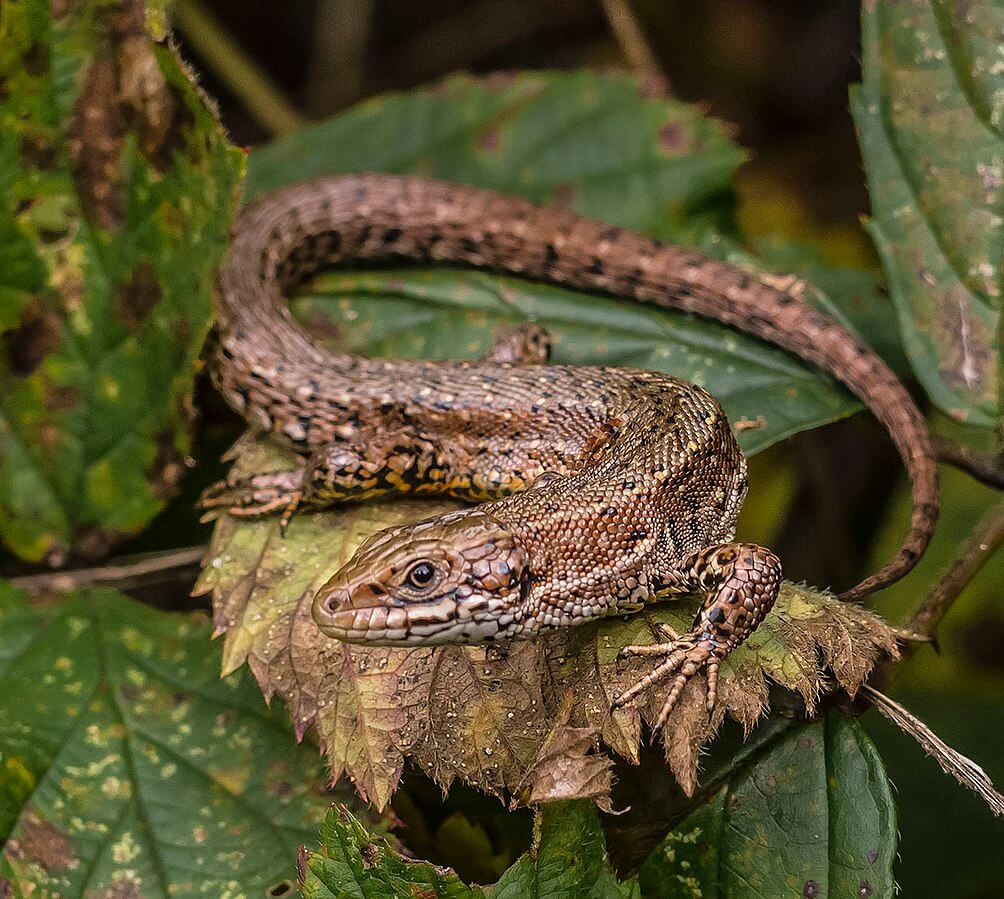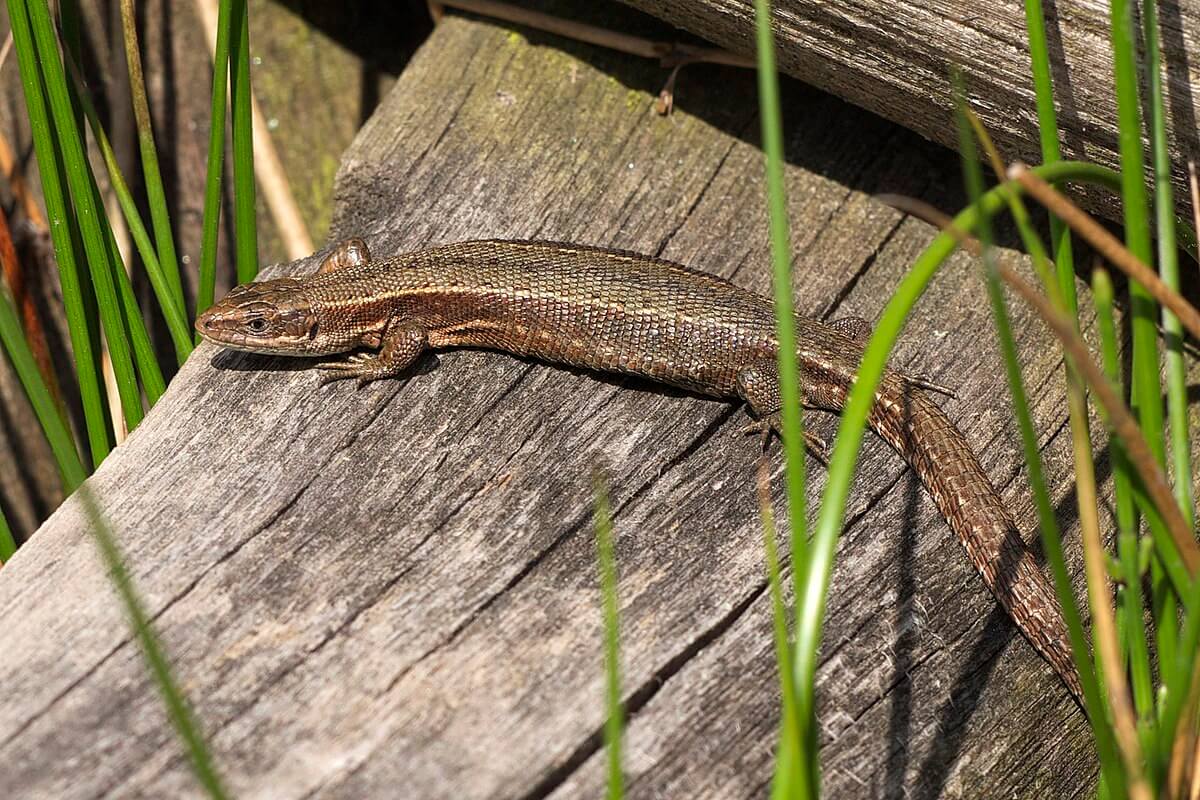A new French study found that lizards living in France were born "older". It is not about a sequel to "The Amazing Story of Benjamin Button", but about another item on the list of damages from the climate crisis
By Nina Sudin - Angle, Science and Environment News Agency

One day an extraordinary boy arrives in the imaginary city of Inovil: he only needs to look into a person's eyes to know the exact date on which he will die. When the death dates of all the town's residents are recorded in their personal files, the new information shakes their lives. This plot framework is the background to Ofir Tosha Gefela's book "On the Day the Music Dies", a fictional novel that raises questions about the question: Would we like to find out when we die?
Many of us would surely refuse to accept this startling piece of information. However, when it comes to biological research there are actually advantages to discovering the expected lifespan of different species, mainly to understand how different environmental factors may affect it. How do you do that? While scientific research has not yet invented the tool that predicts exact dates of death, in every cell in the bodies of animals and plants you can find the telomeres - the ends of chromosomes (DNA molecules), which can help predict the lifespan of that creature.
study צרפתי New find thatLizards who adapted to life in the cold of the French mountains, were born with shorter telomeres than before - a characteristic that indicates that they are "older", that is, with a shorter life span. In addition, the study found that the population of those lizards has decreased over the years, and in some cases has even become completely extinct. In other words: the danger of extinction may be real for the lizards, and this is due to the climate crisis that causes the shortening their life expectancy.
living on the edge
What exactly are those telomeres, and why is their length an important tool for understanding the lifespan of lizards? Telomeres exist in all eukaryotic organisms (the broad group of organisms that includes, among others, all animals, plants and fungi), and they do not code for genes or are used for gene control like most DNA in chromosomes - but they have other functions.
One function is related to their unique shape. "The telomere is the region of the end of the chromosome, which may be taken up by the cell by mistake as a break that requires repair," explains Dr. Amos Belmakar, director of the bird collection at the Steinhart Museum of Nature at Tel Aviv University. "This is why the telomere has a unique, three-dimensional structure, which signals that it is the end of a chromosome, and not a problematic fragment."
Another function of the telomeres is to protect the ends of the chromosomes during the duplication and division of DNA that occurs throughout life. "In every division, the chromosomes get a little shorter," Belmakar explains. This is due to an inherent defect in the DNA replication process. "Since the telomeres are at the ends, they are the ones that shorten, thus protecting against damage to the important genetic material that is further down the chromosomes." So, the telomeres get shorter as time goes by. The shortening also occurs for other reasons, for example: mental stress, unhealthy eating or lack of physical activity.
When the telomeres become too short and cannot continue to fulfill their function, parts of the chromosomes begin to be deleted and they may even connect to each other. The entire cell's function is affected, and it stops being active. "This is why the average length of telomeres in a cell is a tool for predicting the survival probability of a certain creature," says Belmakar. "The shorter the telomeres, we can conclude that the individual will live less time." In other words: in the normal breeding process, offspring are born with full telomere length, so these areas are a sort of measure of old age in a particular organism.
As part of the new study, the researchers tested the length of those telomeres in the DNA of 126 female viviparous lizards and 231 of their offspring from 9 different population groups living in the Massif Central mountains in southern France. The researchers followed the same lizards for more than a decade, with the aim of checking how their lifespan is affected by the climate crisis. The results were certainly surprising.
Lizards are becoming extinct
The study found that as the lizards lived in warmer areas, their telomeres were shorter, and their offspring were also born with shorter telomeres. Therefore, the researchers concluded that the length of the telomeres may be passed genetically, from adult lizards to their offspring, in a process that puts them at risk of extinction due to the rapid aging of the population.

In addition, the researchers discovered that in all the groups tested, the population of lizards decreased over the years, and as the temperatures increased, the population decreased even more. The group that lived in the area where the warming was the most significant even became completely extinct. Also, the study found that many lizards died before reaching reproductive age - a conclusion that is consistent with the fact that shorter telomeres were found in these lizards, meaning that they were born "old".
What has changed (in the lizard, in general)
The researchers hypothesized that the increase in global temperatures caused the acceleration of metabolism and cell division in these lizards ("Live fast, die young"), thereby shortening the telomeres too quickly and perhaps even harming their extension to the normal state in the process of creating the embryo.
However, while the climate crisis has many consequences for various animals, and the lizards among them, Balmakar emphasizes that finding a causal relationship between a certain aspect of this crisis and a specific injury to an animal - is scientifically almost impossible.
"The climate crisis affects many factors in animals: the food, the predators, the parasites, the anatomy, and more, and these factors affect each other," explains Belmakar. "Therefore, even if we see a change in the lizards - it is difficult to know unequivocally which aspect exactly causes that change and in what way." In addition, Blamker points out that the timing at which telomere length was tested is significant and may affect the results of the study. "To understand whether the length of the telomeres is inherited, and whether their shortening is an evolutionary change - it is meaningful to measure the length of the telomeres precisely at the moment of fertilization, before environmental factors shorten them, something that was not done in this study."
However, despite the complexities of this type of research, Balmacker emphasizes his contribution. "The important conclusion that emerges from the research is that the climate crisis exerts physiological pressure on animals," he explains. "It is true that various creatures have mechanisms that can regulate warming and cooling like those that occur today, but at some point the boundary is crossed, and molecular changes occur, such as those we see in the lizards' telomeres."
In addition, according to Balmkar, the results of studies of this type depend on biological species, and therefore a broad study on the subject is of great importance. "The more systems we study, the more likely we are to find more general patterns, so it is important to continue to study this field comprehensively", he concludes.
More of the topic in Hayadan:
